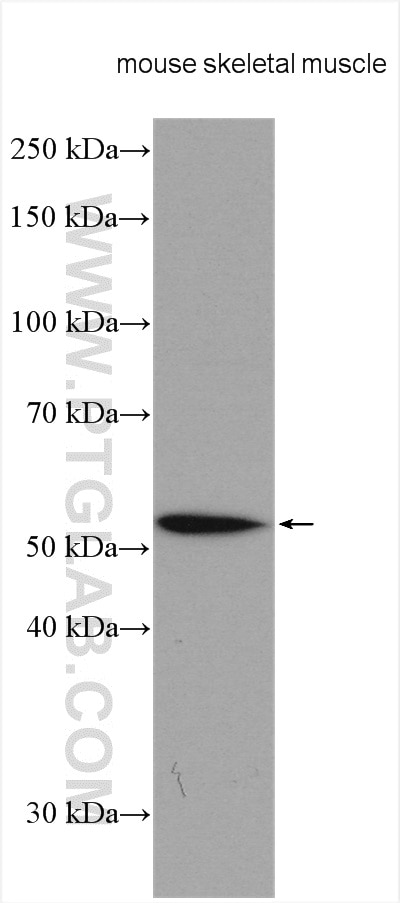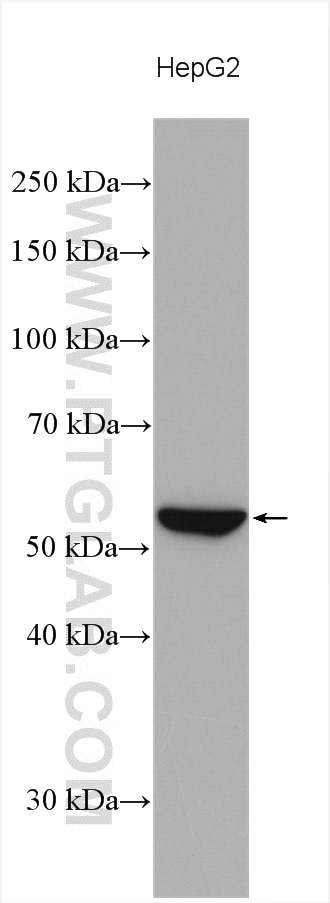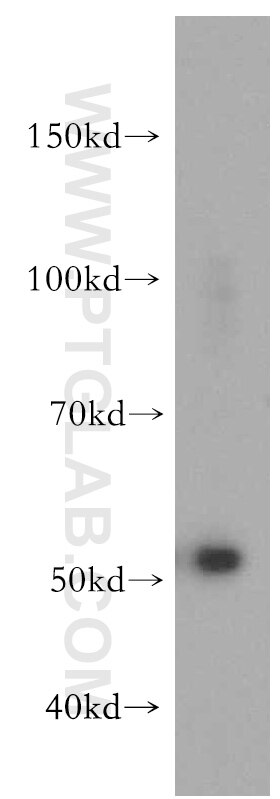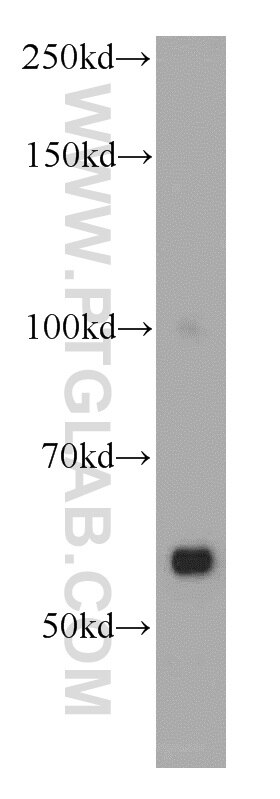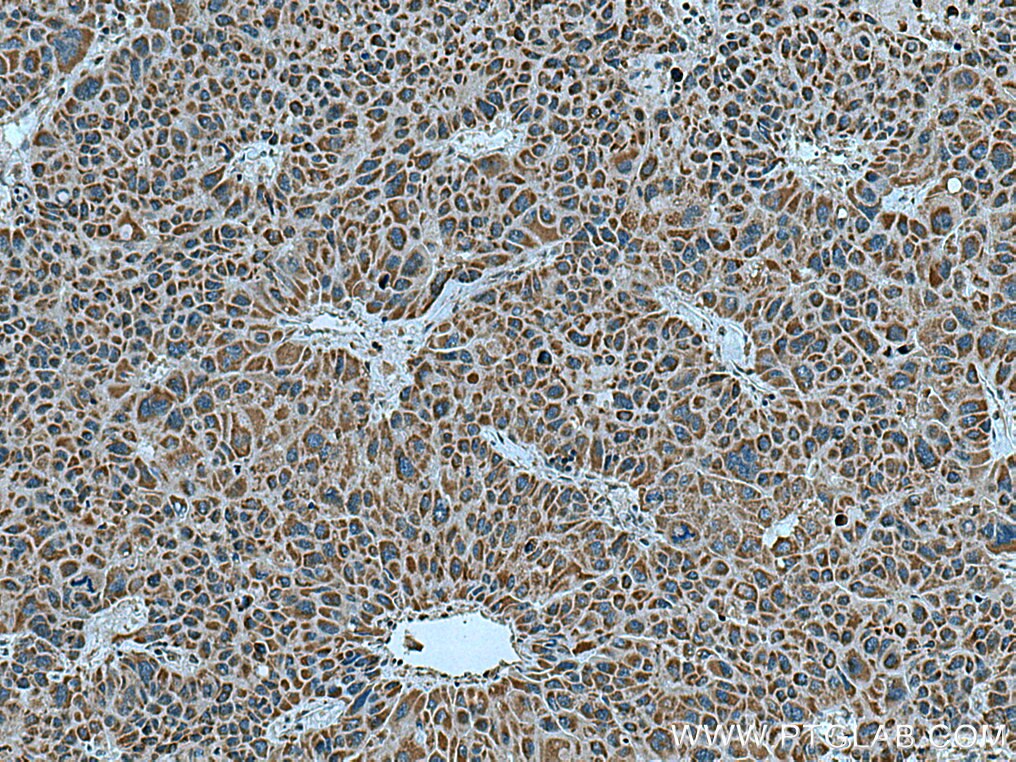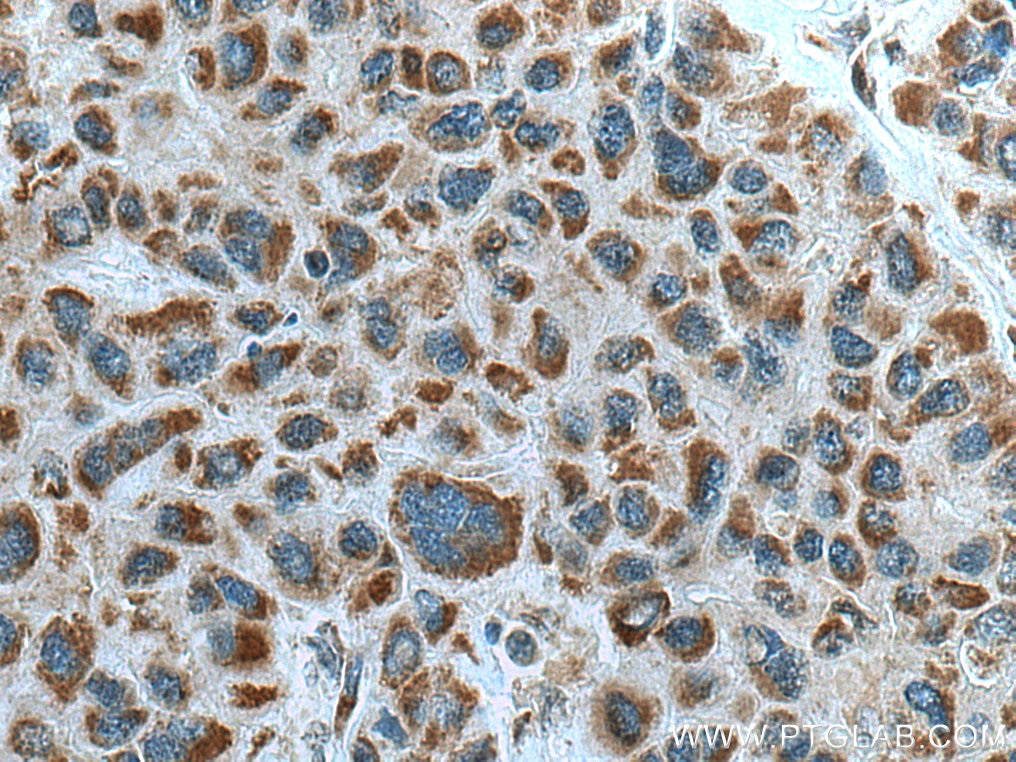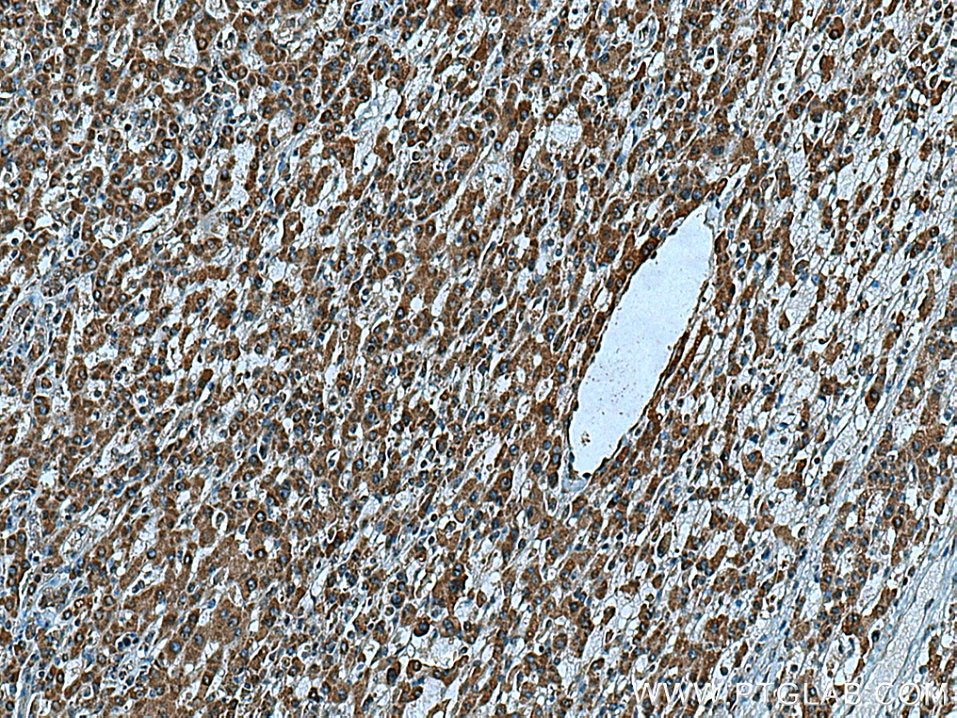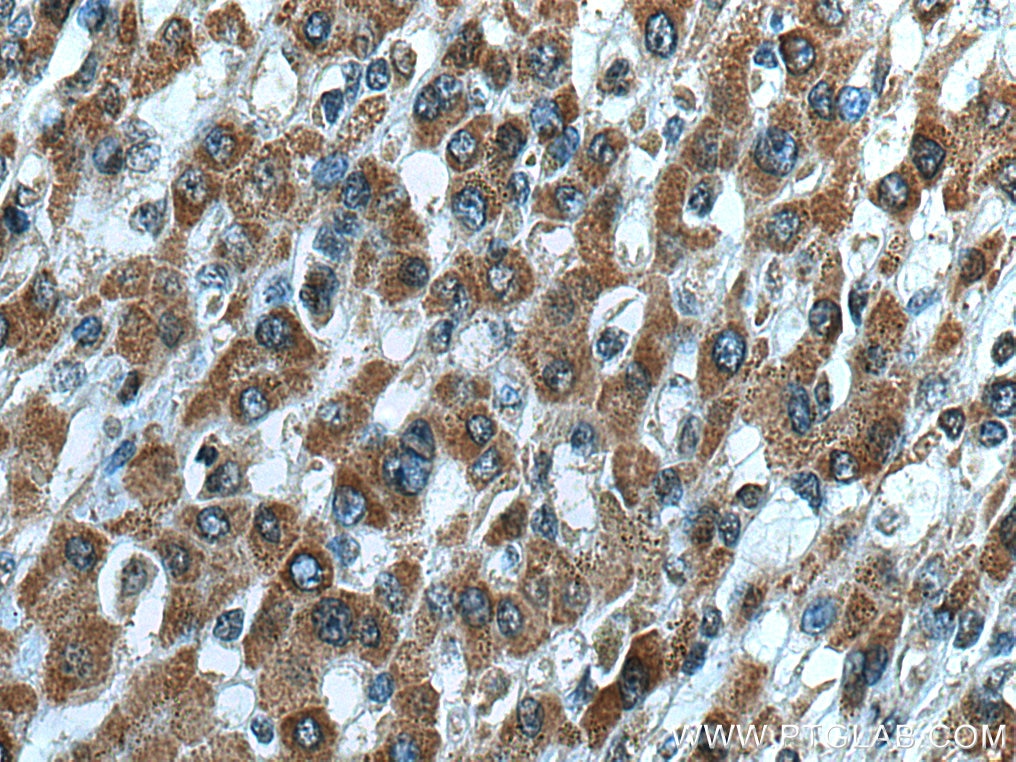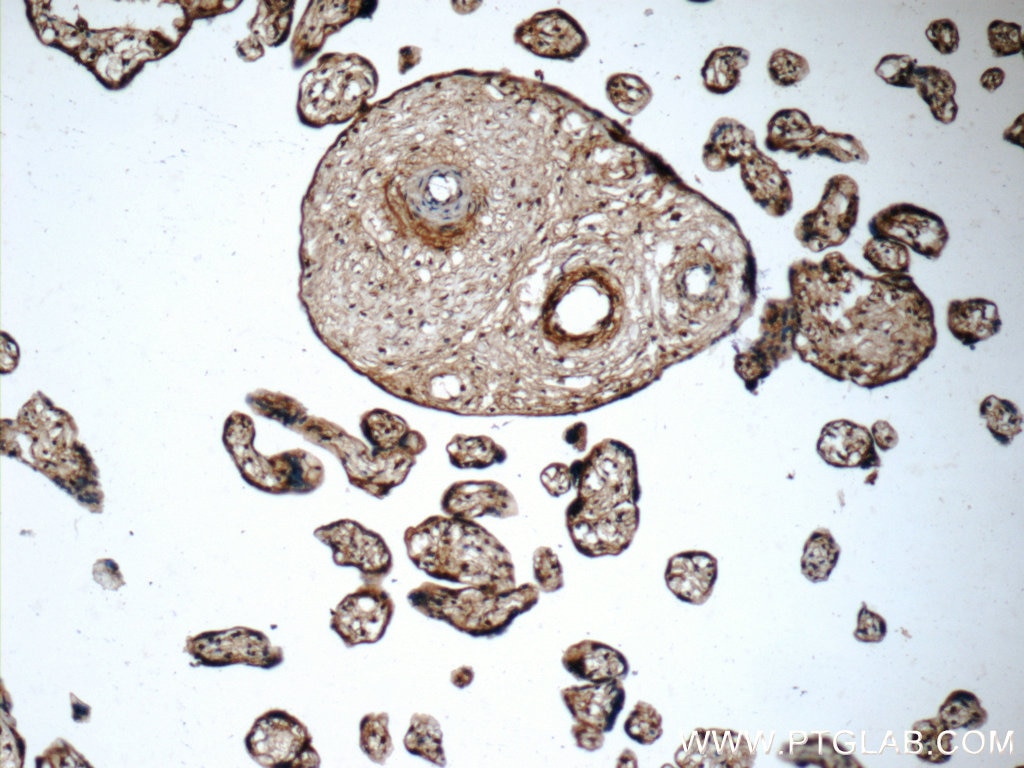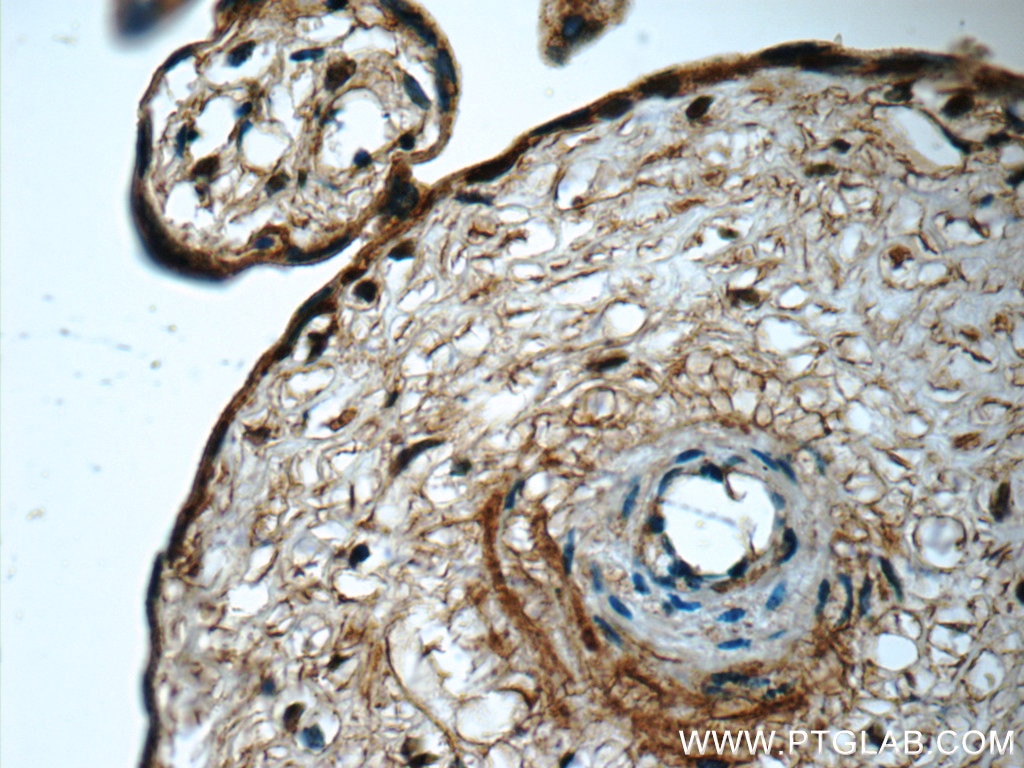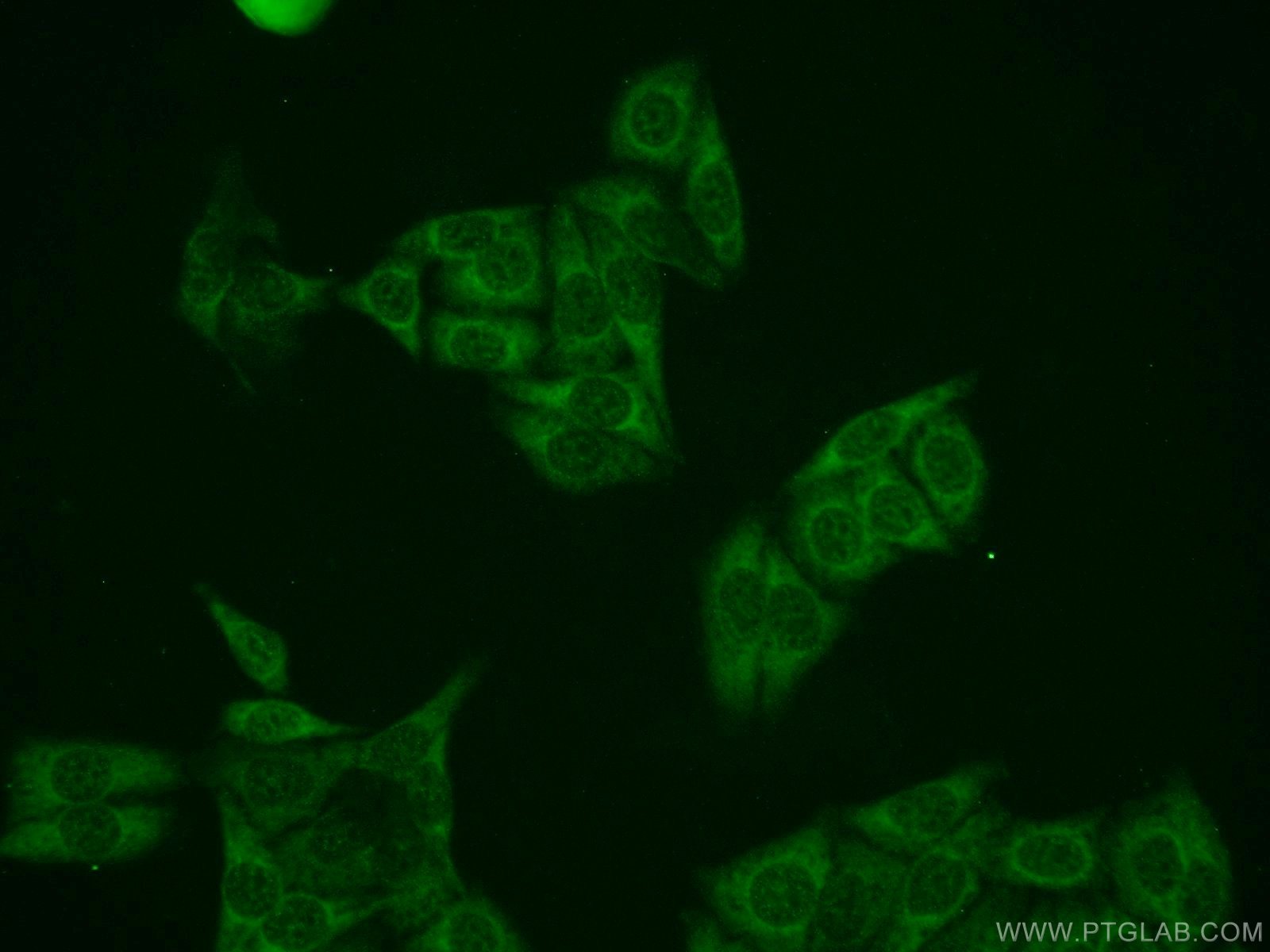- Featured Product
- KD/KO Validated
ZAK Polyklonaler Antikörper
ZAK Polyklonal Antikörper für IF, IHC, WB, ELISA
Wirt / Isotyp
Kaninchen / IgG
Getestete Reaktivität
human, Maus, Ratte
Anwendung
WB, IHC, IF, ELISA
Konjugation
Unkonjugiert
Kat-Nr. : 14945-1-AP
Synonyme
Galerie der Validierungsdaten
Geprüfte Anwendungen
| Erfolgreiche Detektion in WB | Maus-Skelettmuskelgewebe, HepG2-Zellen, humanes Herzgewebe, humanes Skelettmuskelgewebe |
| Erfolgreiche Detektion in IHC | humanes Leberkarzinomgewebe, humanes Plazenta-Gewebe Hinweis: Antigendemaskierung mit TE-Puffer pH 9,0 empfohlen. (*) Wahlweise kann die Antigendemaskierung auch mit Citratpuffer pH 6,0 erfolgen. |
| Erfolgreiche Detektion in IF | HepG2-Zellen |
Empfohlene Verdünnung
| Anwendung | Verdünnung |
|---|---|
| Western Blot (WB) | WB : 1:500-1:1500 |
| Immunhistochemie (IHC) | IHC : 1:50-1:500 |
| Immunfluoreszenz (IF) | IF : 1:10-1:100 |
| It is recommended that this reagent should be titrated in each testing system to obtain optimal results. | |
| Sample-dependent, check data in validation data gallery | |
Veröffentlichte Anwendungen
| KD/KO | See 1 publications below |
| WB | See 5 publications below |
Produktinformation
14945-1-AP bindet in WB, IHC, IF, ELISA ZAK und zeigt Reaktivität mit human, Maus, Ratten
| Getestete Reaktivität | human, Maus, Ratte |
| In Publikationen genannte Reaktivität | human, Maus |
| Wirt / Isotyp | Kaninchen / IgG |
| Klonalität | Polyklonal |
| Typ | Antikörper |
| Immunogen | ZAK fusion protein Ag6747 |
| Vollständiger Name | sterile alpha motif and leucine zipper containing kinase AZK |
| Berechnetes Molekulargewicht | 91 kDa |
| Beobachtetes Molekulargewicht | 52 kDa |
| GenBank-Zugangsnummer | BC001401 |
| Gene symbol | ZAK |
| Gene ID (NCBI) | 51776 |
| Konjugation | Unkonjugiert |
| Form | Liquid |
| Reinigungsmethode | Antigen-Affinitätsreinigung |
| Lagerungspuffer | PBS mit 0.02% Natriumazid und 50% Glycerin pH 7.3. |
| Lagerungsbedingungen | Bei -20°C lagern. Nach dem Versand ein Jahr lang stabil Aliquotieren ist bei -20oC Lagerung nicht notwendig. 20ul Größen enthalten 0,1% BSA. |
Hintergrundinformationen
ZAK(sterile-alpha motif and leucine zipper containing kinase AZK) is also named as MLTK, MAPKKK, mlklak, MLK7, AZK, MLT, MRK, HCCS-4 and belongs to the MAPKKK family. It is a mitogen-activated protein kinase kinase kinase (MAP3K) that activates the stress-activated protein kinase/c-jun N-terminal kinase pathway and activates NF-kappaB. ZAK contributes to regulation of DNA damage checkpoints through a p38gamma-independent pathway. This protein has 3 isoforms produced by alternative splicing with the MW of 91 kDa, 51 kDa and 35 kDa.
Protokolle
| Produktspezifische Protokolle | |
|---|---|
| WB protocol for ZAK antibody 14945-1-AP | Protokoll herunterladen |
| IHC protocol for ZAK antibody 14945-1-AP | Protokoll herunterladen |
| IF protocol for ZAK antibody 14945-1-AP | Protokoll herunterladen |
| Standard-Protokolle | |
|---|---|
| Klicken Sie hier, um unsere Standardprotokolle anzuzeigen |
Publikationen
| Species | Application | Title |
|---|---|---|
Immunity Cytoplasmic DNA sensing by KU complex in aged CD4+ T cell potentiates T cell activation and aging-related autoimmune inflammation.
| ||
Nat Commun Ribosome impairment regulates intestinal stem cell identity via ZAKɑ activation | ||
Cell Metab Ribosome stalling is a signal for metabolic regulation by the ribotoxic stress response | ||
Cell Death Dis Nitric oxide-induced ribosome collision activates ribosomal surveillance mechanisms | ||
Rezensionen
The reviews below have been submitted by verified Proteintech customers who received an incentive forproviding their feedback.
FH Amy (Verified Customer) (08-14-2019) | Worked well with 5% milk in 0.2% PBST.Shows up well the beta isoform in mouse muscle, and alpha in heart.Did not work in Zebrafish despite the kinase domain being highly conserved between organisms.
|
